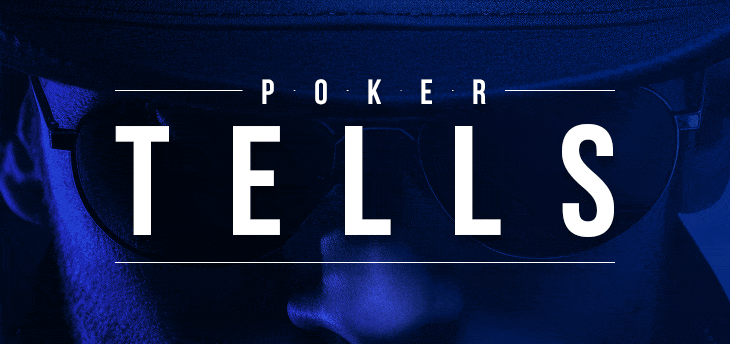In the high-stakes game of poker, the slightest hint of a smile or a subtle twitch of the eye can reveal more than a perfect hand. These subtle cues, known as ‘poker tells‘, can be the difference between walking away a winner or folding with an empty wallet. But are you ready to peer behind the poker face and decode these tells? Then shuffle up, deal, and let’s dive into the exciting world of poker tells.
Are you just putting on a poker face, acting like you know what poker tells are? Or are you genuinely interested in honing your ability to read your opponents? Whichever it is, this article will unmask the art of identifying poker tells and using them to your advantage.

Understanding the Basics
So, what exactly is a poker tell? It’s essentially a change in behavior or demeanor that can give you insight into a player’s potential hand strength. They’re like the breadcrumbs from the story that Hansel and Gretel left in the forest, subtly leading you toward understanding your opponent’s hand. But remember, just like Hansel and Gretel, not all breadcrumbs lead to a gingerbread house. Some players are adept at giving off false tells, making you believe they’re strong when they’re weak or vice versa.
Recognizing Visual Tells
They say the eyes are the windows to the soul, and in poker, they can be the windows to a strong or weak hand. Rapid eye movement, prolonged staring, or even avoiding eye contact can all indicate a player’s comfort or discomfort with their hand. But it’s not just the eyes; other visual tells can include facial expressions, body language, and even how a player handles their chips or cards.

Decoding Verbal Tells
If visual tells are the windows, then verbal tells are the doors to understanding a player’s hand. The tone of voice, rate of speech, and even the specific words a player uses can provide clues to their hand strength. For instance, a player with a strong hand might try to appear weak by sounding unsure or hesitant. Conversely, a player with a weak hand might try to intimidate others by speaking confidently or aggressively.
Play the Player, Not the Cards
Reading poker tells isn’t just about recognizing individual cues; it’s about understanding the bigger picture. This involves observing a player’s overall behavior, their patterns of play, and how they react in different situations. Do they always scratch their nose when bluffing? Do they become talkative when they have a strong hand? Understanding these behavioral patterns can give you a significant advantage in the game.
Beware of False Tells
Just when you thought you had it all figured out, along comes the concept of false tells. Some experienced players are skilled at giving off deceptive cues, leading their opponents down the wrong path. They might act strong when they’re weak or act weak when they’re strong, throwing off even the most observant players. The key is to be aware of the possibility of false tells and to use your judgment to determine their authenticity.

Leveraging Technology in Reading Tells
In the modern era, technology plays a role in understanding poker tells. With the rise of online poker, players have adapted to reading digital tells. These include the speed of play, the size of bets, and even the use of the chat feature. In online poker, you don’t have the luxury of observing physical cues, making it crucial to be observant of these digital signals. Players should adapt their tell-reading skills to include these new, online-specific behaviors.
The Role of Experience
Experience plays a crucial role in accurately reading poker tells. Veteran players, who have spent countless hours at the table, develop an intuitive sense of reading their opponents. This intuition is not just about observing isolated tells but about understanding the context in which they occur. For instance, a player’s demeanor might change under pressure, and only an experienced player can discern whether this change signifies strength or weakness.
The Art of Reading Poker Tells
Mastering the art of reading poker tells is like learning a new language. It’s not just about understanding individual cues but recognizing patterns, interpreting context, and distinguishing between genuine and false tells.
Remember, visual tells can be found in a player’s eyes, face, and body language. Verbal tells are hidden in their tone of voice, rate of speech, and choice of words. Always pay attention to behavioral patterns and be aware of the possibility of deceptive cues.
Pair this knowledge with a solid understanding of poker strategy, and you’re well on your way to becoming a formidable player. So, keep your eyes open, your ears sharp, and your mind alert. It’s time to uncover the secrets hidden behind the poker face. Ready to read between the lines? Good luck!
Expanding upon the existing article, let’s delve deeper into the nuances of poker tells and further refine our understanding of this fascinating aspect of the game.
Whether you’re a fan of high-stakes cash games or the excitement of multi-table poker tournaments, GGPoker is the premier destination for poker enthusiasts. For those aiming to compete for a prestigious WSOP bracelet, push through the ranks for a WSOP Circuit ring, or simply hone their strategies in classic games or poker formats, GGPoker has something for everyone. The platform offers a seamless online poker experience, with innovative features like Smart HUD, PokerCraft, and integrated staking, designed to elevate your game. Whether you’re grinding your way up in daily cash games or competing for life-changing prizes in major online series, GGPoker provides the best environment to play, improve your poker skills, and succeed in the world of online poker. And if you are not sure where to start, you can always play free poker games and learn at the GGPoker School.




